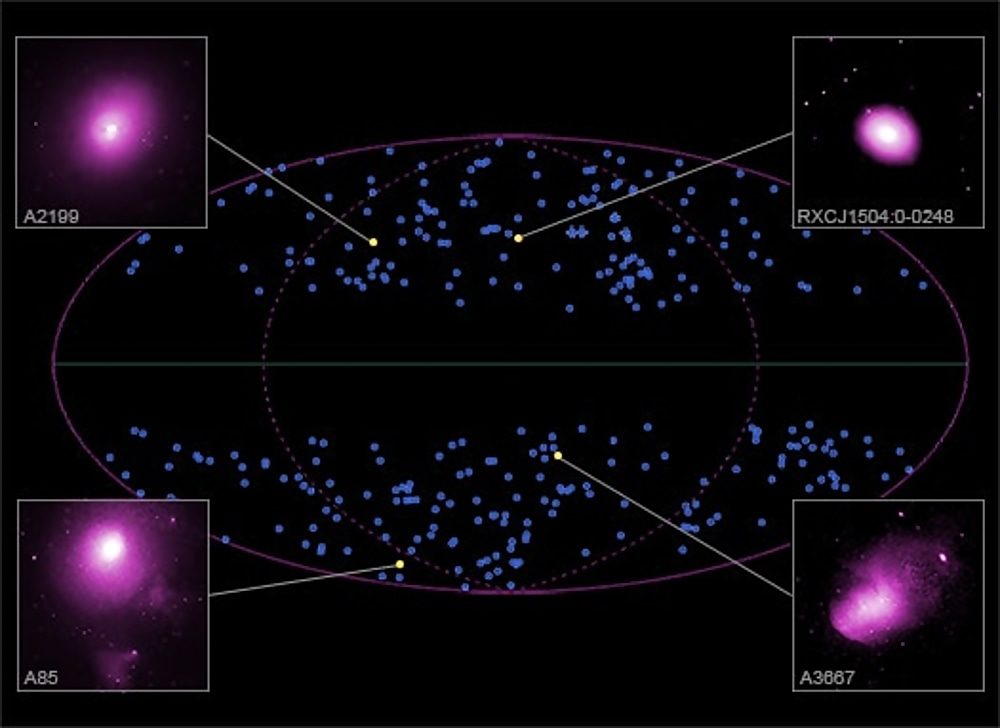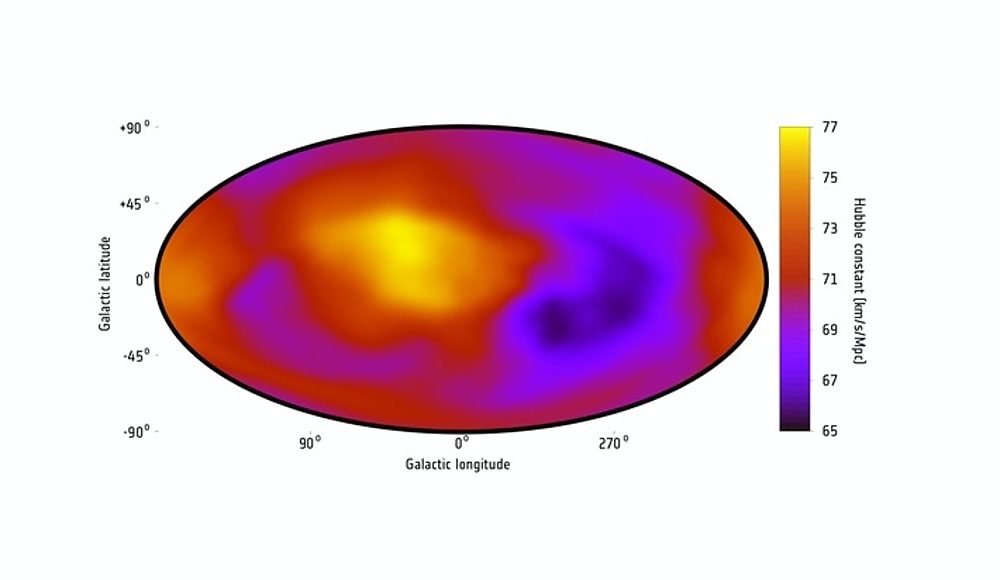
Less than a second after the Big Bang, the universe suddenly blew up from nothing to a hot, dense sea of neutrons and electrons stretching across trillions of lightyears.
And, 13.8 billion years later, the universe is still expanding, albeit at a much slower rate.
The prevailing theory, known as the isotropy hypothesis, argues that the universe is not only expanding but doing so at the same rate in all directions. But a new study suggests that may not be the case at all.
In a study published Wednesday in the journal Astronomy and Astrophysics, astronomers challenge this cornerstone theory of cosmology. The results suggest that while the universe is expanding, it is not expanding at the same rate in all directions.
The study relies on observations of some of the cosmos' largest structures, galaxy clusters, by three X-ray observatories: the European Space Agency's XMM-Newton, NASA's Chandra, and the German-led ROSAT.
The researchers looked at 800 galaxy clusters across the universe, measuring the temperature of each cluster's hot gas. They then compared the data with how bright the clusters appeared in the sky.
If the universe was in fact isotropic, then galaxy clusters of similar temperatures, located at similar distances, would have similar levels of luminosity. But that was not the case.

"We saw that clusters with the same properties, with similar temperatures, appeared to be less bright than what we would expect in one direction of the sky, and brighter than expected in another direction," Thomas Reiprich, professor at the University of Bonn, Germany and co-author of the new study, said in a statement.
"These differences are not random, but have a clear pattern depending on the direction in which we observed in the sky."
Ultimately, the new study suggests that the universe is anisotropic, meaning that it has a different value when measured in different directions.
Dark forces
The scientists don't know what would cause the universe to expand at different rates in different places.
At first, they didn't entirely trust the results. They considered other explanations for the observations, including undetected gas, or dust blocking the view of the clusters. But the data did not support either of those scenarios.
Instead, they believe the weird observations may have something to do with dark energy.
Dark energy is a mysterious force that accounts for more than 60 percent of the universe, and accounts for the space in between cosmic bodies and holds matter in place through gravitational force.
Previous work suggests the universe is expanding at an accelerating rate. Scientists believe dark energy, which is essentially pulling galaxies apart, drives the acceleration.
Very little is known about dark energy, because it is impossible to observe. But scientists believe that it is not uniform. As a result, dark energy may be stronger in some parts of the universe, and weaker in other parts. If that is true, then it could cause the universe to expand at different rates in different places.
Universal consequences
The results, while odd, do not suggest the universe will run out of space in one direction faster than the other.
The universe does not need more 'space' to expand — its very expansion changes the metric of spacetime itself. The findings, however, may have a major impact on future astronomical observations.
"If the Universe is truly anisotropic, even if only in the past few billion years, that would mean a huge paradigm shift because the direction of every object would have to be taken into account when we analyze their properties," Konstantinos Migkas, a graduate student at the University of Bonn and first author of the new study, said in the statement.
"Today, we estimate the distance of very distant objects in the Universe by applying a set of cosmological parameters and equations. We believe that these parameters are the same everywhere," he said.
"But if our conclusions are right then that would not be the case and we would have to revisit all our previous conclusions."
Abstract: The isotropy of the late Universe and consequently of the X-ray galaxy cluster scaling relations is an assumption greatly used in astronomy. However, within the last decade, many studies have reported deviations from isotropy when using various cosmological probes; a definitive conclusion has yet to be made. New, effective and independent methods to robustly test the cosmic isotropy are of crucial importance. In this work, we use such a method. Specifically, we investigate the directional behavior of the X-ray luminosity-temperature (LX-T) relation of galaxy clusters. A tight correlation is known to exist between the luminosity and temperature of the X-ray-emitting intracluster medium of galaxy clusters. While the measured luminosity depends on the underlying cosmology through the luminosity distance DL, the temperature can be determined without any cosmological assumptions. By exploiting this property and the homogeneous sky coverage of X-ray galaxy cluster samples, one can effectively test the isotropy of cosmological parameters over the full extragalactic sky, which is perfectly mirrored in the behavior of the normalization A of the LX-T relation. To do so, we used 313 homogeneously selected X-ray galaxy clusters from the Meta-Catalogue of X-ray detected Clusters of galaxies. We thoroughly performed additional cleaning in the measured parameters and obtain core-excised temperature measurements for all of the 313 clusters. The behavior of the LX-T relation heavily depends on the direction of the sky, which is consistent with previous studies. Strong anisotropies are detected at a ≳4σ confidence level toward the Galactic coordinates (l, b) ∼ (280°, − 20°), which is roughly consistent with the results of other probes, such as Supernovae Ia. Several effects that could potentially explain these strong anisotropies were examined. Such effects are, for example, the X-ray absorption treatment, the effect of galaxy groups and low redshift clusters, core metallicities, and apparent correlations with other cluster properties, but none is able to explain the obtained results. Analyzing 105 bootstrap realizations confirms the large statistical significance of the anisotropic behavior of this sky region. Interestingly, the two cluster samples previously used in the literature for this test appear to have a similar behavior throughout the sky, while being fully independent of each other and of our sample. Combining all three samples results in 842 different galaxy clusters with luminosity and temperature measurements. Performing a joint analysis, the final anisotropy is further intensified (∼5σ), toward (l, b) ∼ (303°, − 27°), which is in very good agreement with other cosmological probes. The maximum variation of DL seems to be ∼16 ± 3% for different regions in the sky. This result demonstrates that X-ray studies that assume perfect isotropy in the properties of galaxy clusters and their scaling relations can produce strongly biased results whether the underlying reason is cosmological or related to X-rays. The identification of the exact nature of these anisotropies is therefore crucial for any statistical cluster physics or cosmology study.



Reader Comments